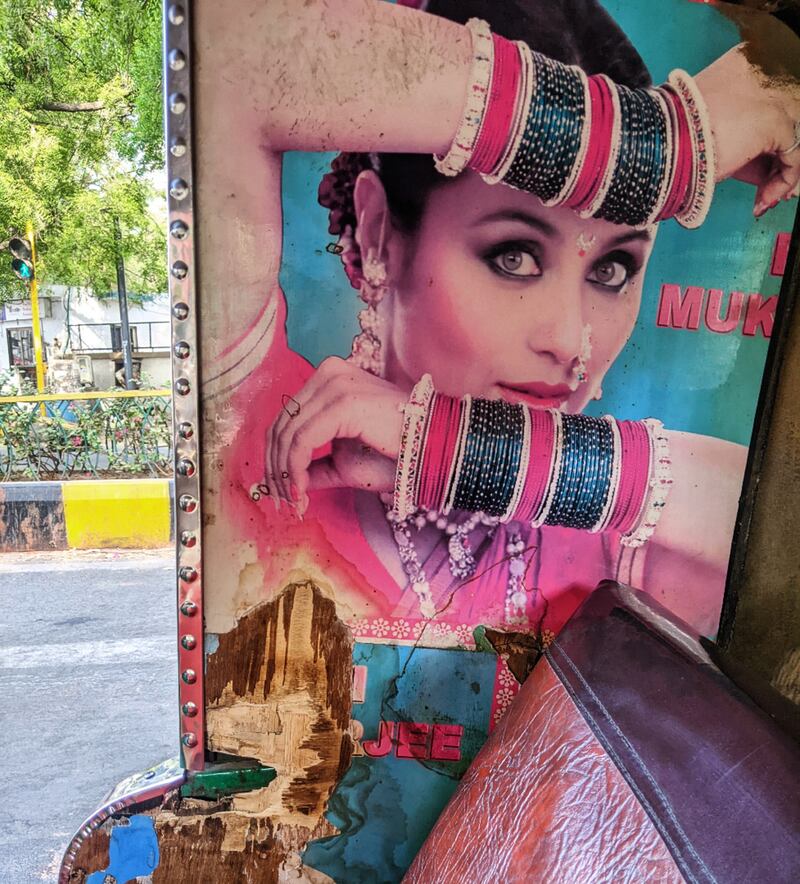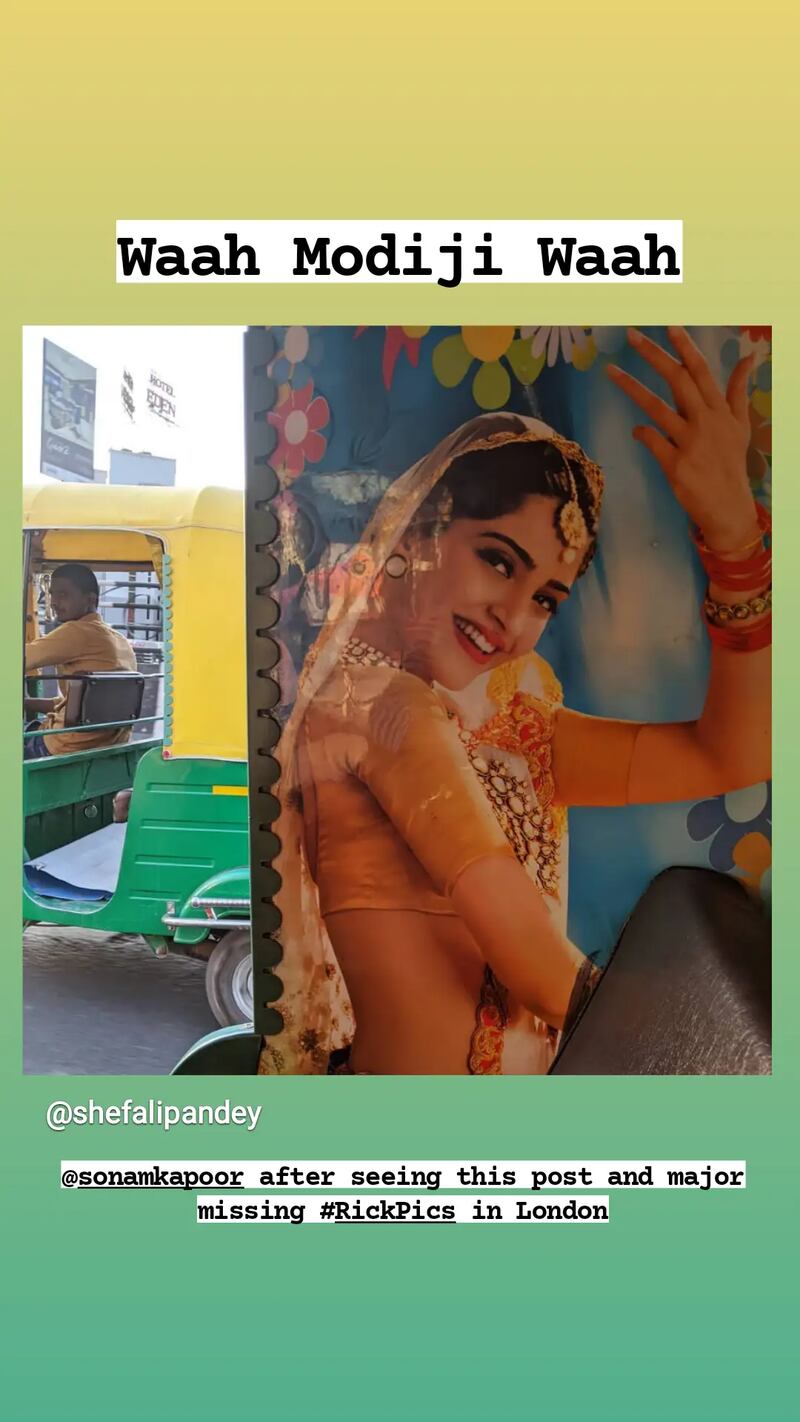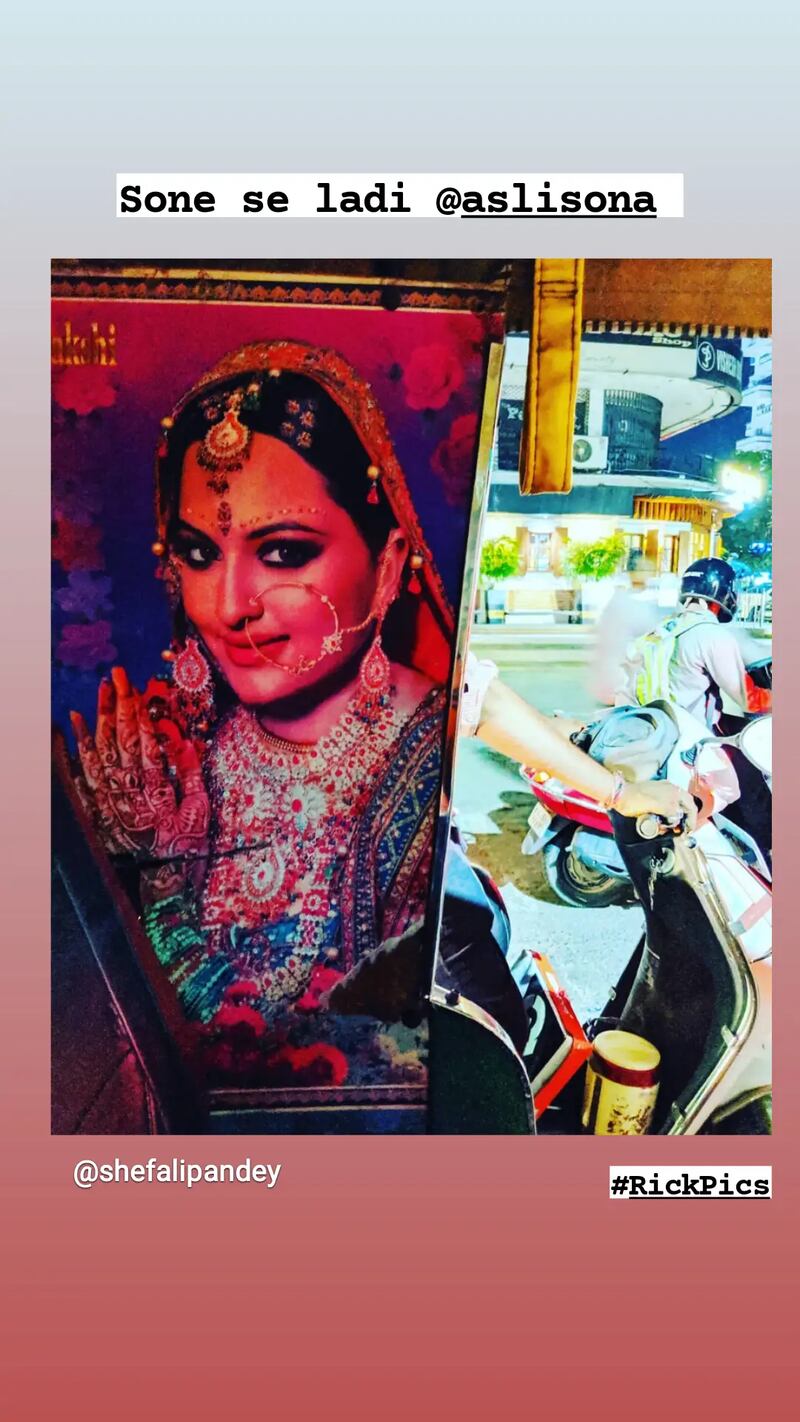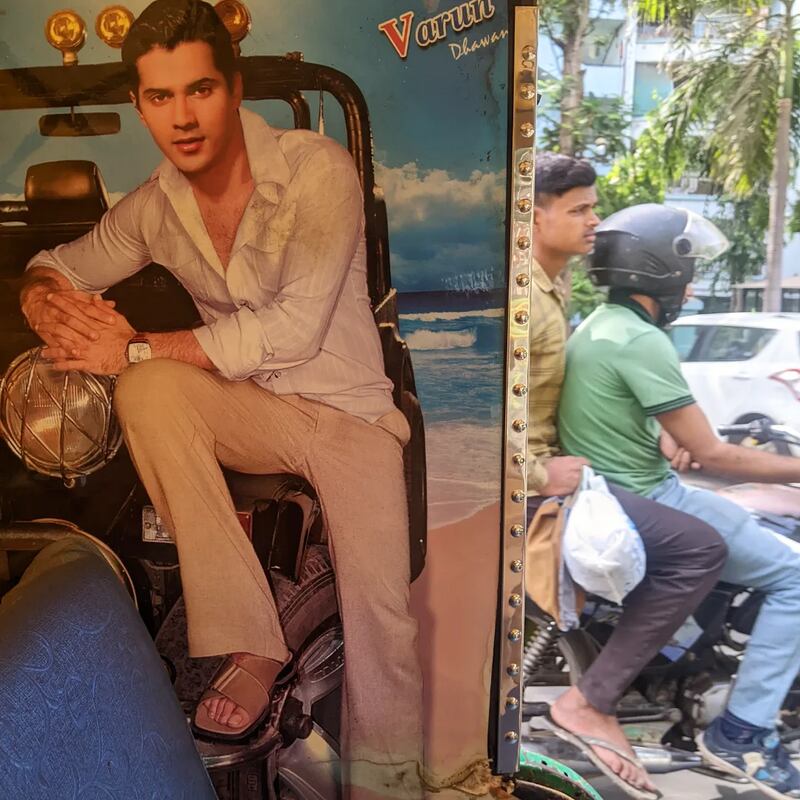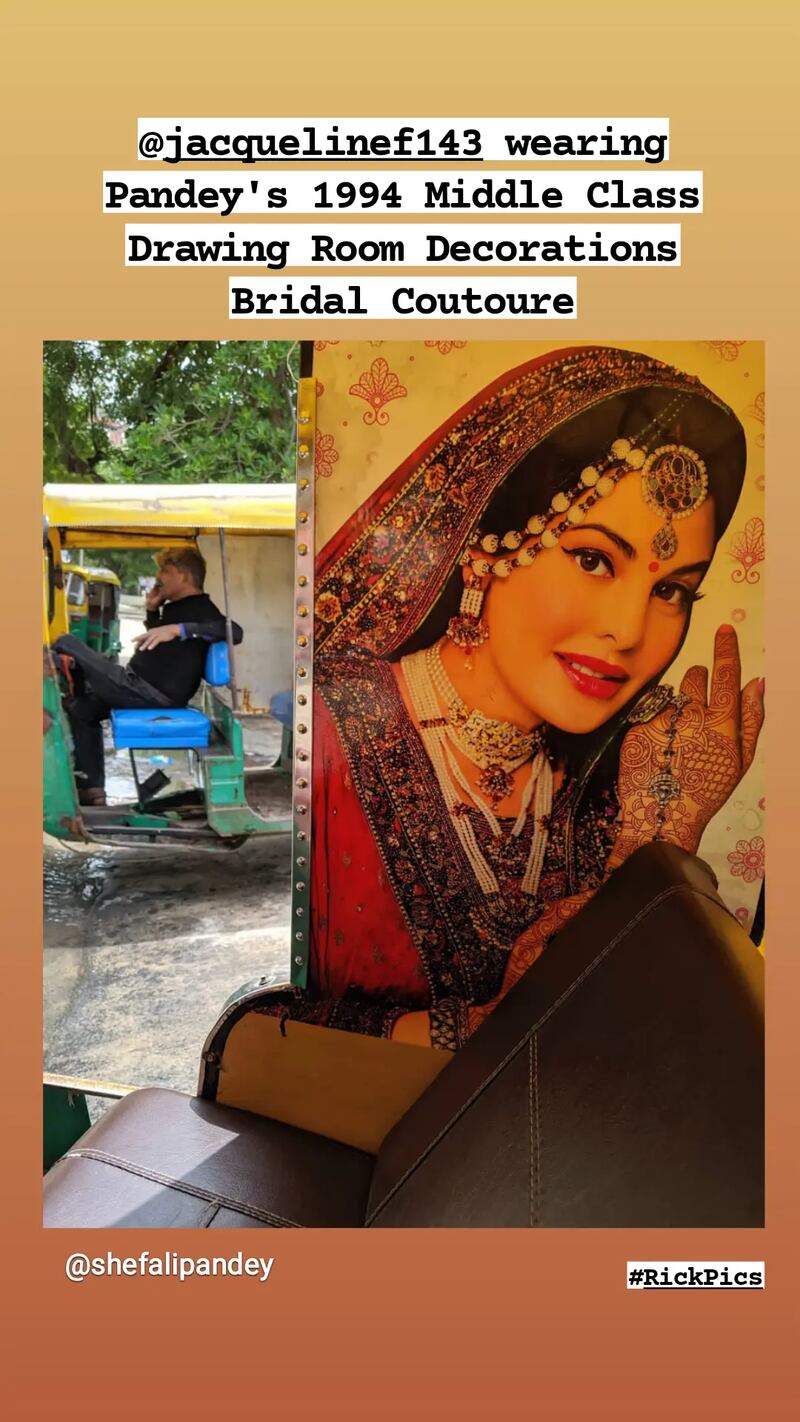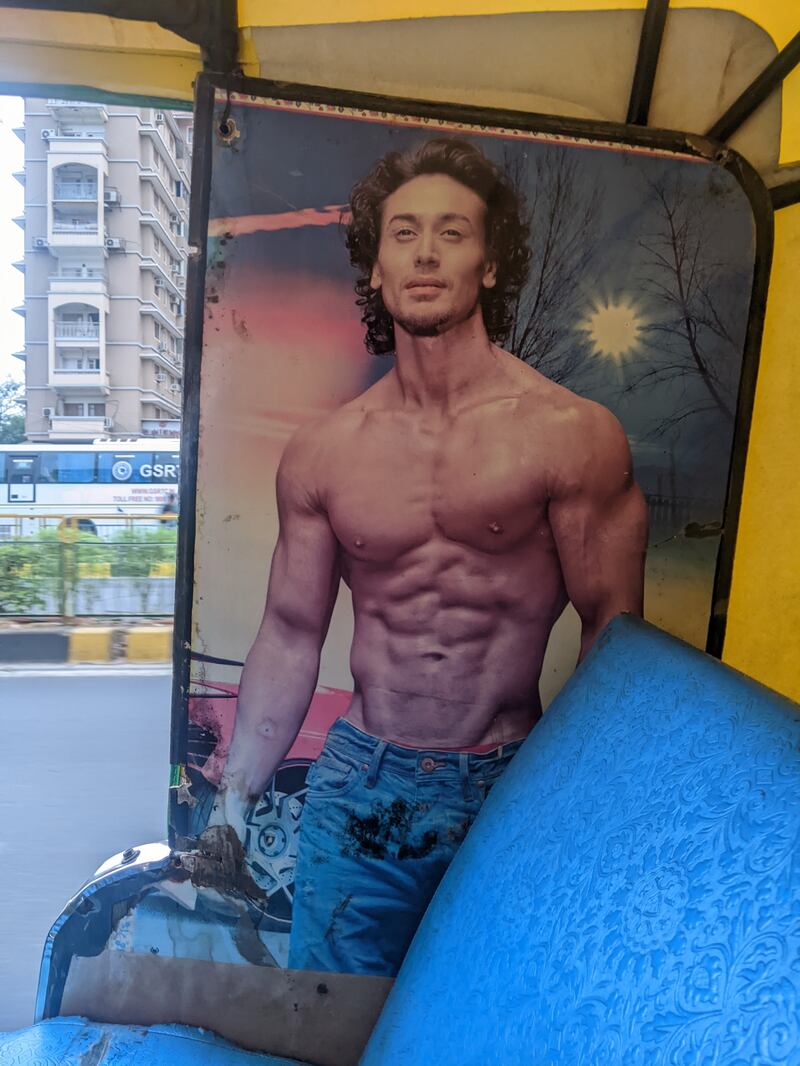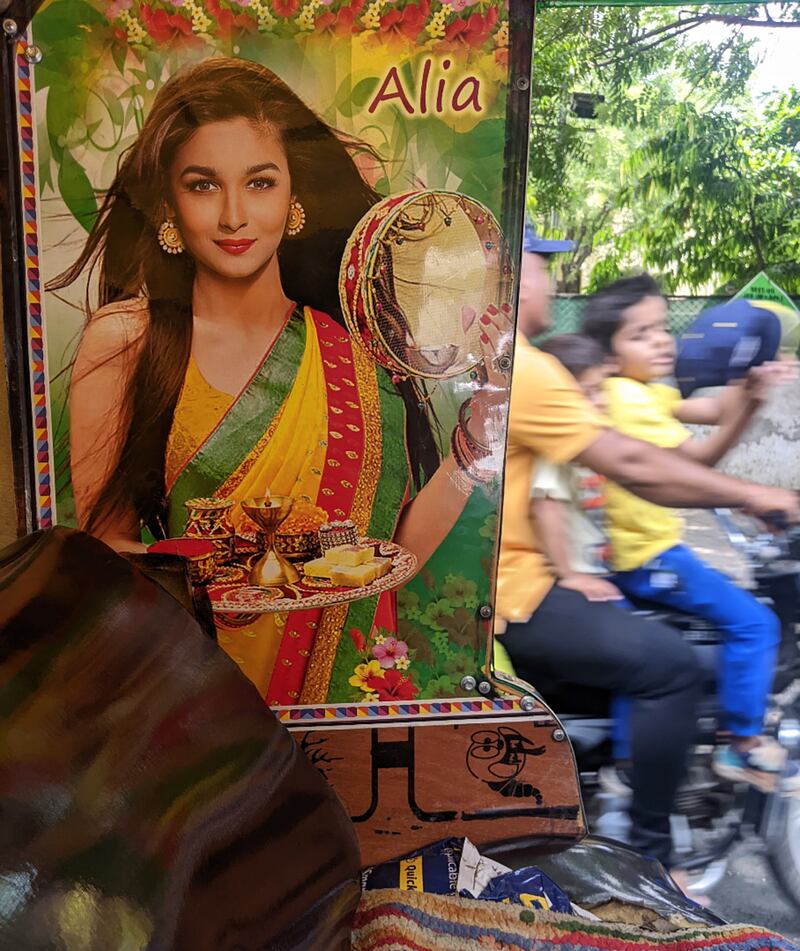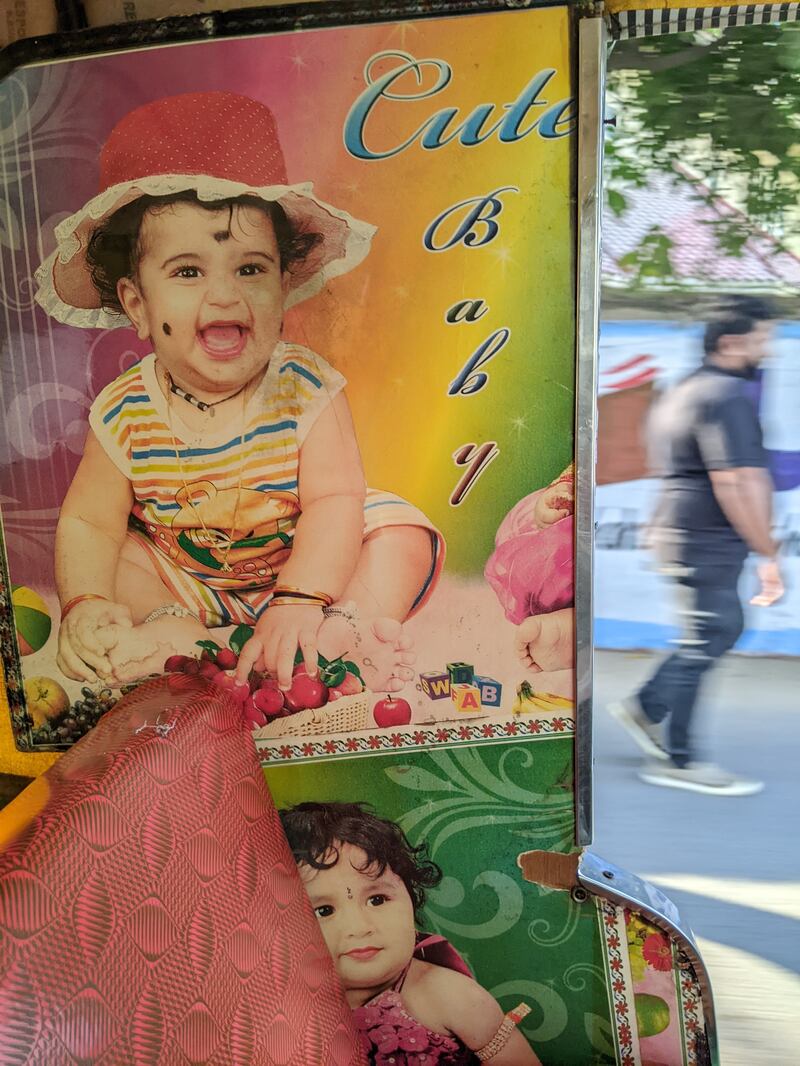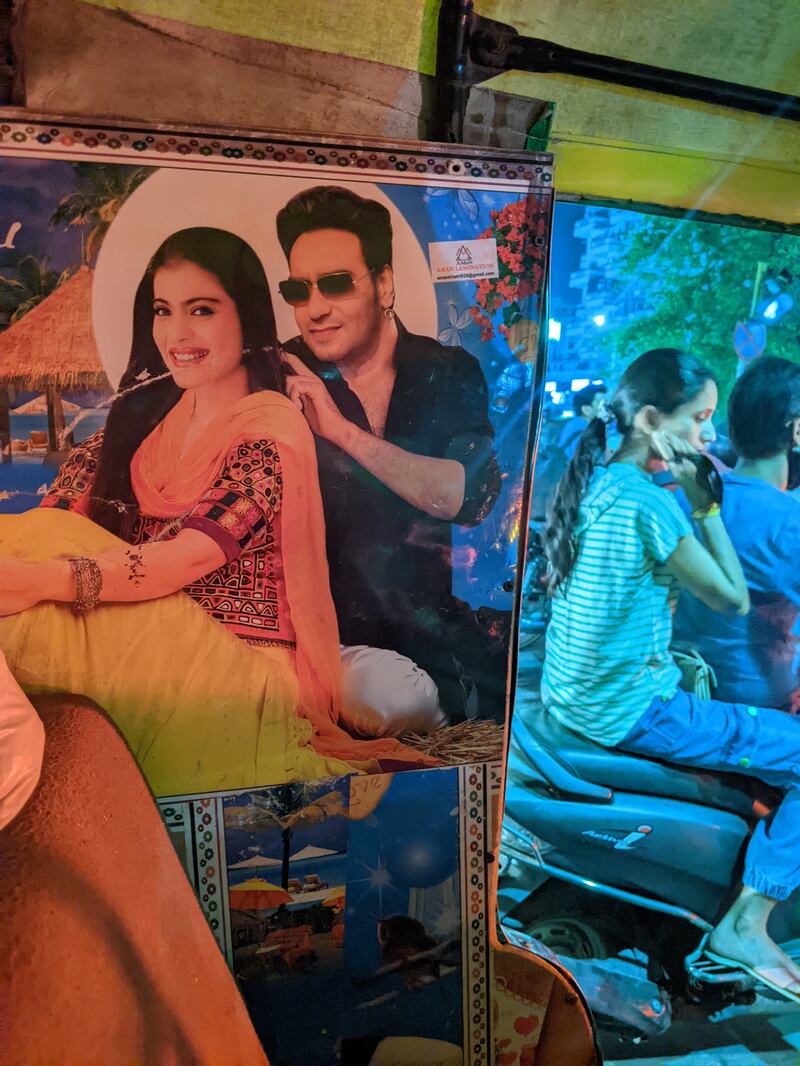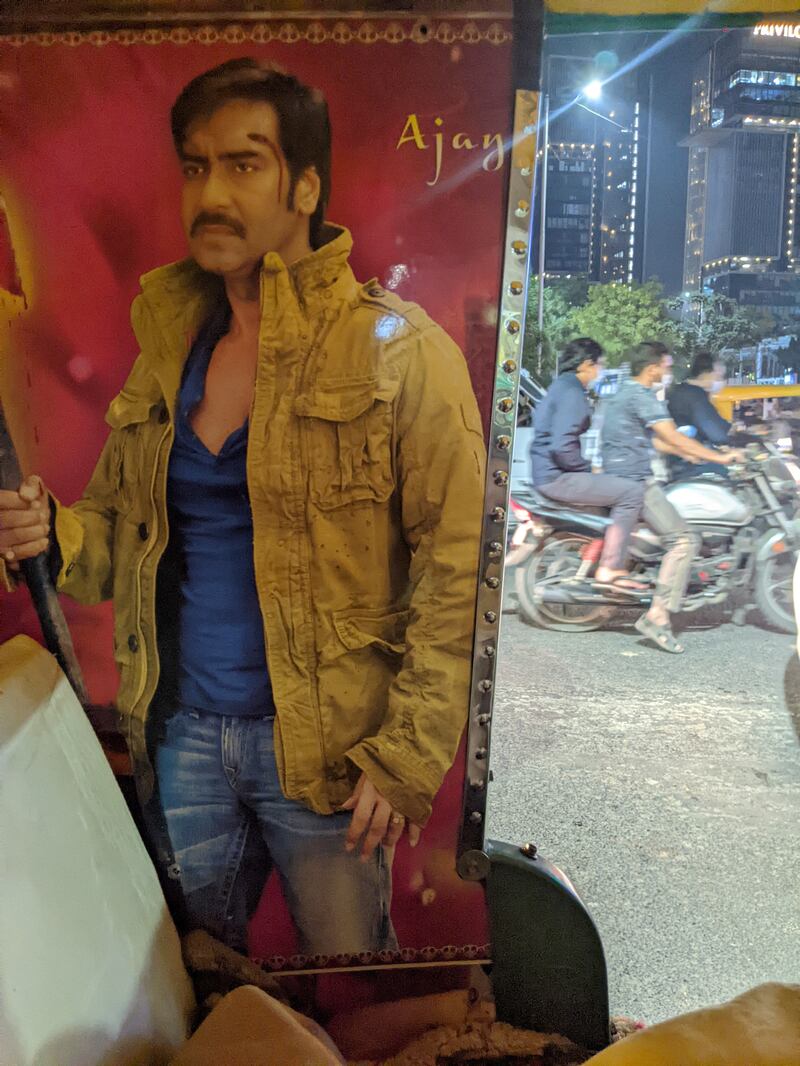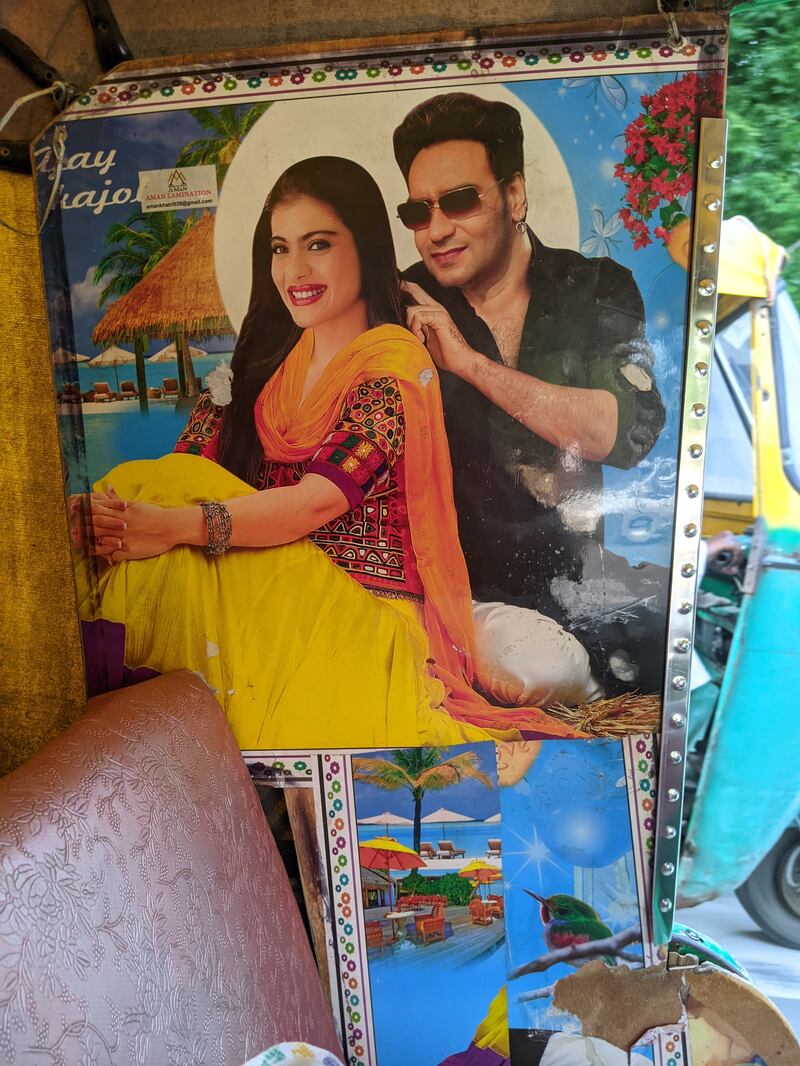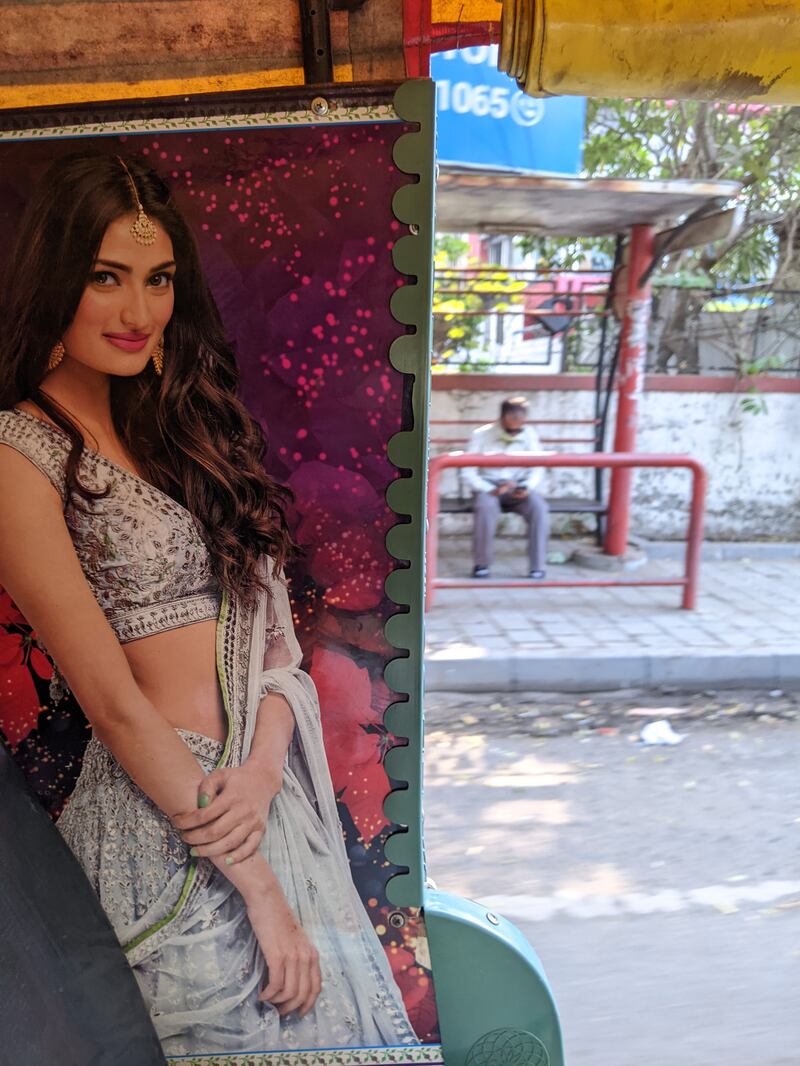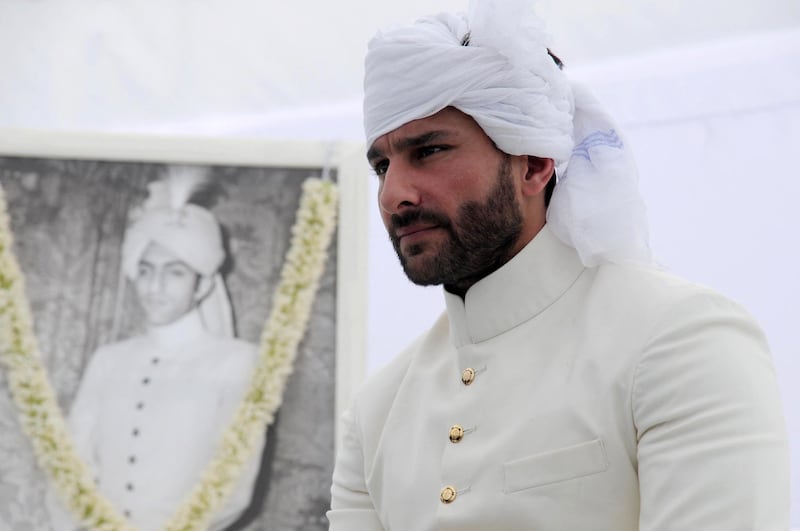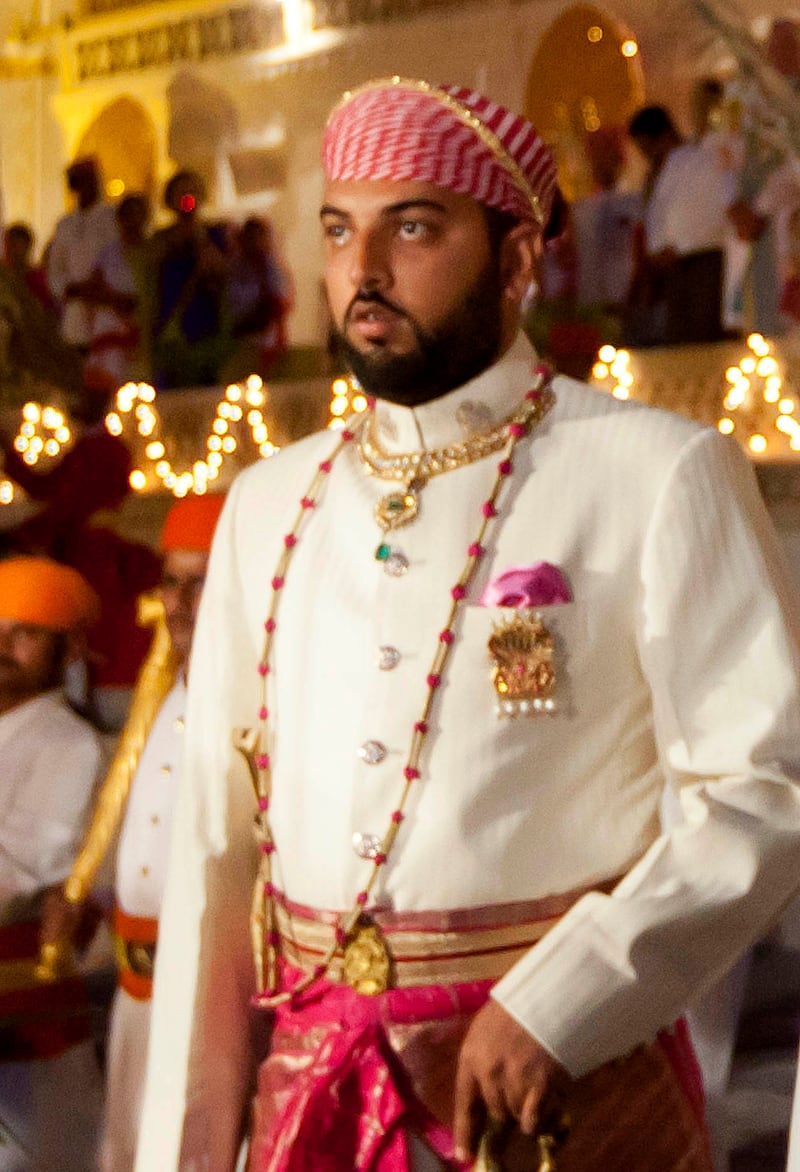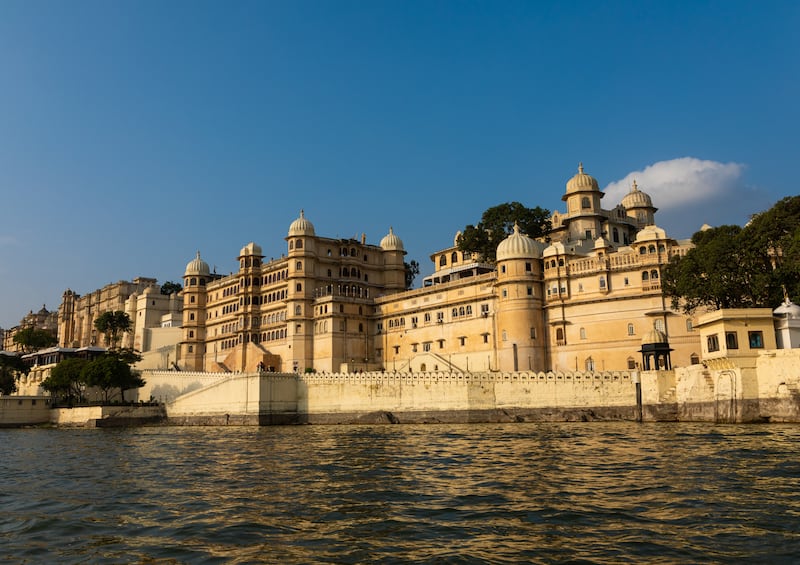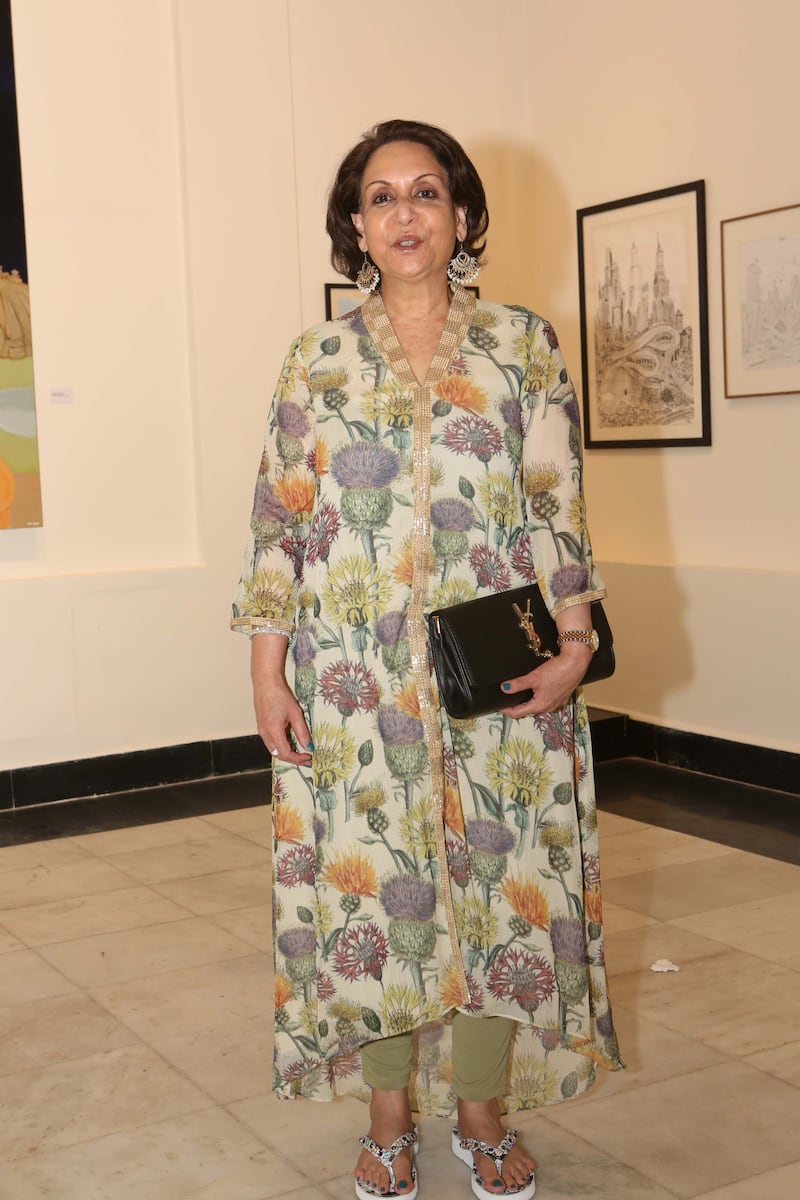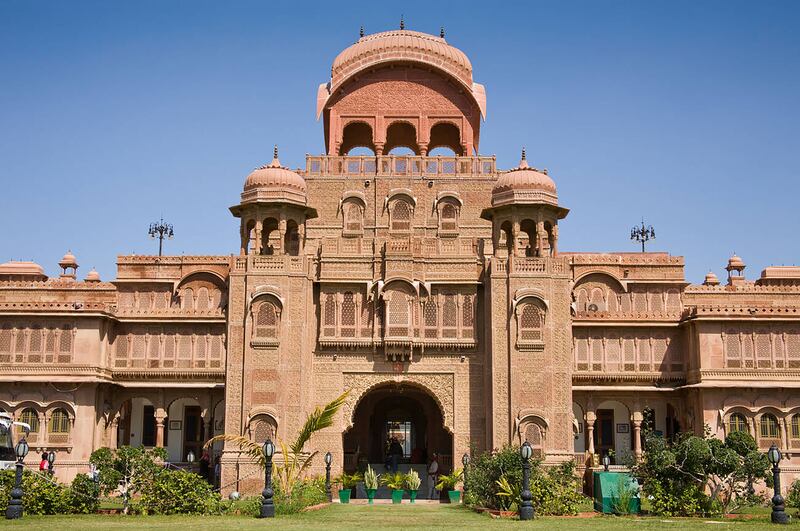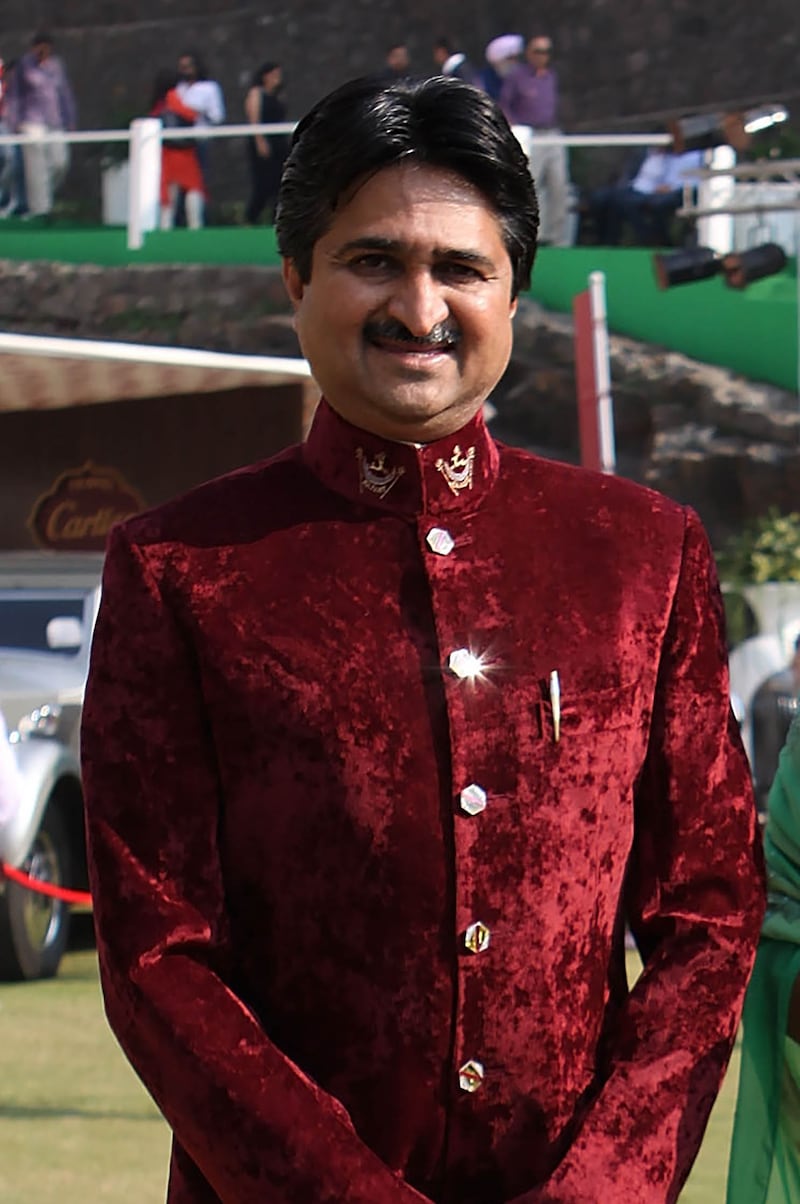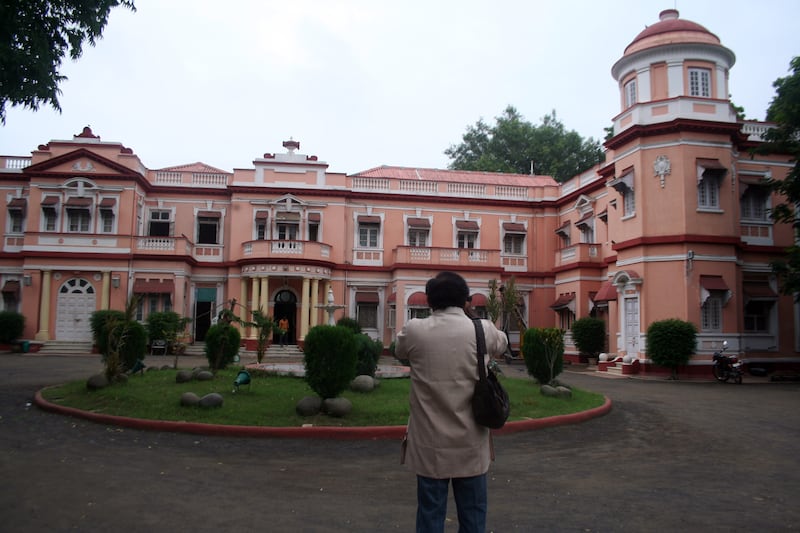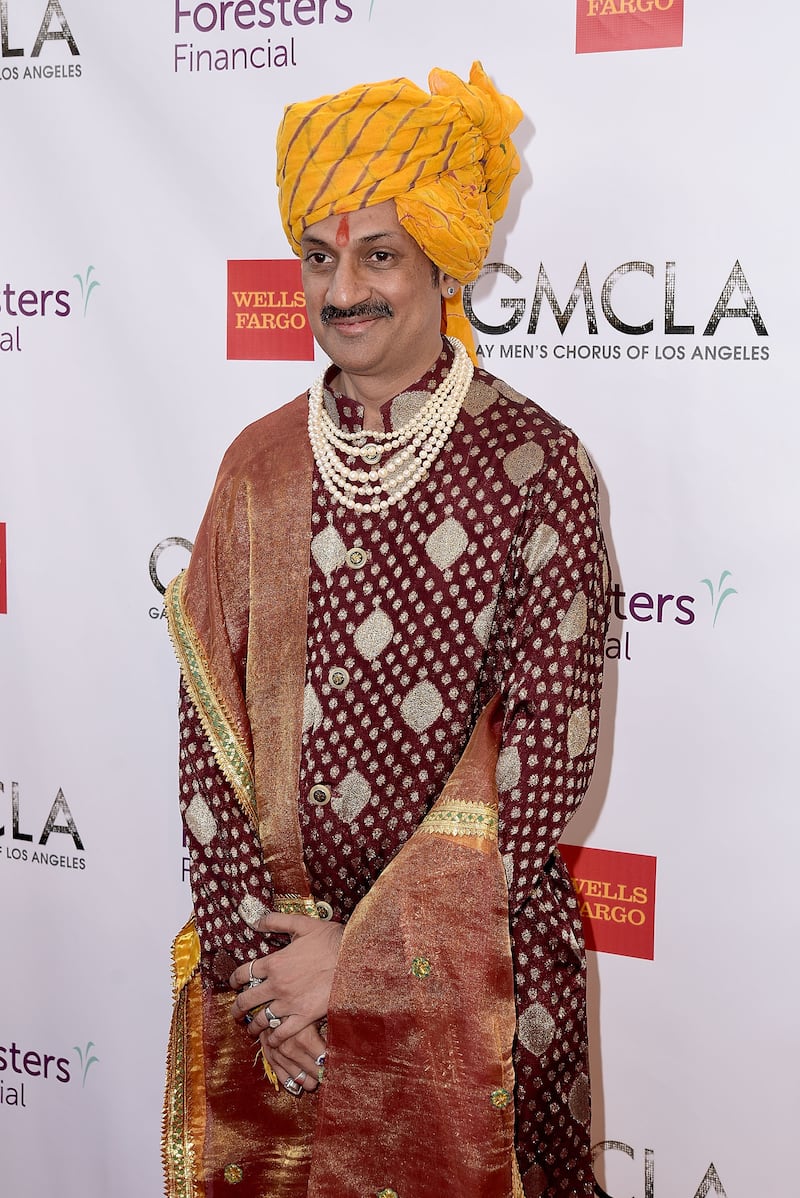Images of cherubic babies on glossy paper, macho Bollywood heroes with boxing gloves and guns, brides in their finery and veils, a little girl in a silk dhoti walking around the Taj Mahal, pigeons flying or galloping horses — this is what you’ll see on the auto rickshaws of Ahmedabad. The ubiquitous local transport that doubles up as mobile galleries of kitsch art.
Long ago they had hand-painted posters, but now the decorations displayed are tacky, screen-printed designs and bizarre Photoshop skills. These are usually Bollywood inspired and largely dependent on the likes and dislikes of the owner or the workshop crew that outfitted the rickshaw.
Hindi cinema and Bollywood have always had a tremendous influence on the Indian psyche and take a new shape and form in every Indian state. In a country with so many linguistic, religious, cultural and language barriers, Bollywood is something that unites people and brightens people’s lives, which is the reason you find it adorning all kinds of public transport.

One woman has set out to document it all ― Shefali Pandey, whose #RickPics project on Instagram has captured a wide audience. It started in 2019, with her capturing the art on display around Ahmedabad, the city where she grew up. She sometimes adds witty captions linked to political or social issues that are trending, or simply lets the art speak for itself.
Pandey, a "transfer kid" who spent her early years in various cities in India, spent nine years in New York, studying journalism and working with publications such as Conde Nast Traveler, and returned to Ahmedabad in 2015.
“I always enjoyed art that is badly done, horror movies and anything that was over the top, as in exaggerated humour,” she says with a laugh. “When I moved back to Mumbai, and then Ahmedabad, and started my own digital agency ― Flora Fountain ― I started looking at my own hometown from a prism of ‘outsideness’ and felt it was exotic. A bit like Gandhi returning to India and seeing it with new eyes."
She started taking photos of "mundane things" around the city; a taxi or a person on a pavement. "I took a long train journey on the Himsagar Express from Kanyakumari to Kashmir, took rickety buses in interior India, armed with my Swiss army knife and a pepper spray, to repel unwanted advances from men.
“I had never learnt to drive because I used public transport when I was abroad, so started taking auto rickshaws to work every day and that started my tryst with the tacky art plastered inside them. It was always curvy women in either bridal finery or tight-fitting clothes, against alpha males like actor Salman Khan, with guns and motorbikes."
Pandey would strike up conversations with the drivers and found the posters were often simply a reflection of their own preferences or chosen to match the upholstery. "The holy trinity of brawny men, overdressed brides and chubby babies were the favourites among images that I saw every day.”
What makes Pandey's account more interesting are her observations. “Last night was a disco,” says the caption below an image of a rickshaw decorated with psychedelic lights.
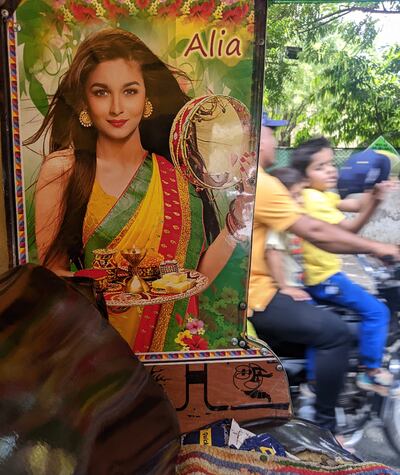
Another below an image of actor Alia Bhatt in exaggerated shades of red, says, “Graphic bhaiyya likes his colours just how I like my fats: saturated."
”Bridal manspreading,” she says of a bride wearing a long skirt, and sitting with her legs apart.
During a ride with Ahmedabad's first female Uber drive she spots nonsensical words plastered inside the rickshaw: "Love of Mother is the vital principal of blessing exercise of health."
“Many of these posters are a throwback to the tacky posters that one saw in homes of the '80s and '90s in India, where there were posters that said ‘Home is where the heart is’ or something like that. It definitely reflects the personal choice of the drivers. I mean, they could have images of even dinosaurs, but they choose Bollywood actors, so it has to mean something.”
She says she does not question people's love of Bollywood any more, having grown up around it. "It’s all-pervasive, unites the country and captures the imagination of millions.
"But it is strange that these drivers choose these images of beautiful brides or actors as against even cricketers, who are extremely popular — maybe it’s their deepest fantasies playing out. Even the actors [shown] change with the times. It used to be Sonakshi Sinha and Karishma Kapoor, now they are moving to Alia Bhatt.”
The rickshaw exercise is only a side project — Pandey still works and is also part of a comedy group called Mahila Manch — but she plans to continue it for as long as she keeps spotting bizarre, nonsensical, kitsch art. "I am overwhelmed by all the response I get on social media. It is, after all, something that’s reflective of our times."
